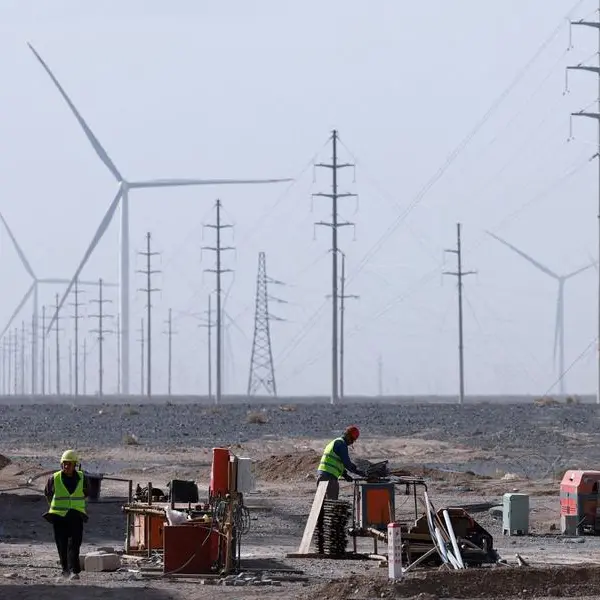PHOTO
CAMBRIDGE – Recent elections in France and the United Kingdom, together with America’s current presidential campaign, reflect the dilemmas left-leaning parties confront as they try to fashion new identities and present credible alternatives to the far right. It was the far right that first capitalized on the backlash to neoliberalism and hyper-globalization that grew in the aftermath of the 2008 global financial crisis. A decade ago, one could justifiably complain about the “abdication of the left.”
To their credit, leftist parties are in a better position today. The Labour Party in Britain has just won in a landslide, ending 14 years of Conservative rule. The left-wing New Popular Front (NFP) coalition in France has a far better chance to stop the rise of the far right than the centrist forces allied with President Emmanuel Macron. US President Joe Biden has taken his country into uncharted territory with new industrial and green policies, though he lags behind Donald Trump in the polls.
As the Democrats’ difficulties in the United States indicate, there is still considerable work to be done for the left. Biden’s age and evident failure to convince the public of his mental fitness is a big part of the problem. But so is the mixed message Democrats have been sending about what they really stand for and who they represent.
This is a problem that afflicts other parties of the left as well. As Thomas Piketty has shown, leftist parties have become unmoored from their traditional working-class base and veered toward the educated elite.
The left has yet to forge an identity that is fit for current realities. How should they reposition themselves? Should they focus on redistribution, as the NFP in France appears to have done? Should they uphold fiscal responsibility, like the UK’s Labour Party? Should they embrace industrial policies à la Biden, and to what purpose? How should they handle issues such as immigration, the environment, or transgender rights, on which the cultural elite hold very different views from the general public?
If the left is to regain political strength, it must return to its roots and once again represent the interests of working people. This means focusing squarely on good, secure, productive jobs for workers without a bachelor’s degree. The increase in economic insecurity, the erosion of the middle class, and the disappearance of good jobs in lagging regions were at the heart of the rise of right-wing populism. Only by reversing these trends can the left present a credible alternative.
The difficulty is that old strategies will not work. Unionized workers in manufacturing formed the core of support for leftist parties in the decades following World War II. They were also the foundation of the middle class.
Today manufacturing employs an ever-smaller share of workers in the US and Europe. The bulk of the workforce is in services. When Biden took office in January 2021, the manufacturing share of US employment had already shrunk to 8.5%. Today it is below 8.2%, despite all his administration’s efforts to revitalize manufacturing. Some European countries, such as Germany, have higher shares of manufacturing employment, but none has managed to avoid a decline over time.
Parties of the left have not yet fully faced this fact. None of their talk about reshoring, competitiveness, digitalization, and the green transition sounds realistic when it comes to jobs. Nor does protectionism against China. Strategies that focus on manufacturing have considerably less political appeal when most workers are not in manufacturing and have no realistic prospect of being employed there.
Redistributive policies also have problems. There is a strong argument for making tax systems more progressive and increasing tax rates on top income earners. Higher social transfers and better social insurance would help, especially in the US, where social safety nets remain weak. But income transfers do not compensate workers for the loss of dignity and social recognition that accompany the disappearance of good jobs. Nor do they repair the breakdown in social and community life that ensues when factories close or move elsewhere.
What the left needs, then, is a credible program of creating good, productive jobs throughout the economy – especially in lagging regions and for workers with less than a university education. The representative target of such a program is not an auto or steel worker, but a care or retail worker.
Moreover, labor-friendly innovation must be at the center of the program. Boosting wages and jobs at the same time requires organizational and technological innovations that enhance the productivity of less-educated workers. Unlike automation and other forms of labor-saving technologies, labor-friendly innovations help ordinary workers perform a greater range of more complicated tasks. Digital tools that confer expertise are an example.
Because innovation and productivity are central to this agenda, the requisite policies look like successful industrial policies of old. We could call them industrial policies for services or, better still, productive policies for labor. They build on existing local cross-sectoral partnerships and national innovation programs, but with a focus on labor-absorbing services and technologies that are complementary to less-educated labor. My colleagues and I have sketched variants of such programs for the US, France, and Britain.
A new left must confront head-on both the new structure of the economy and the productivity imperative. Only then will it turn into the genuine political movement of the future and a credible alternative to the far right.
Dani Rodrik, Professor of International Political Economy at Harvard Kennedy School, is President of the International Economic Association and the author of Straight Talk on Trade: Ideas for a Sane World Economy (Princeton University Press, 2017).
Copyright: Project Syndicate, 2024.
www.project-syndicate.org





















